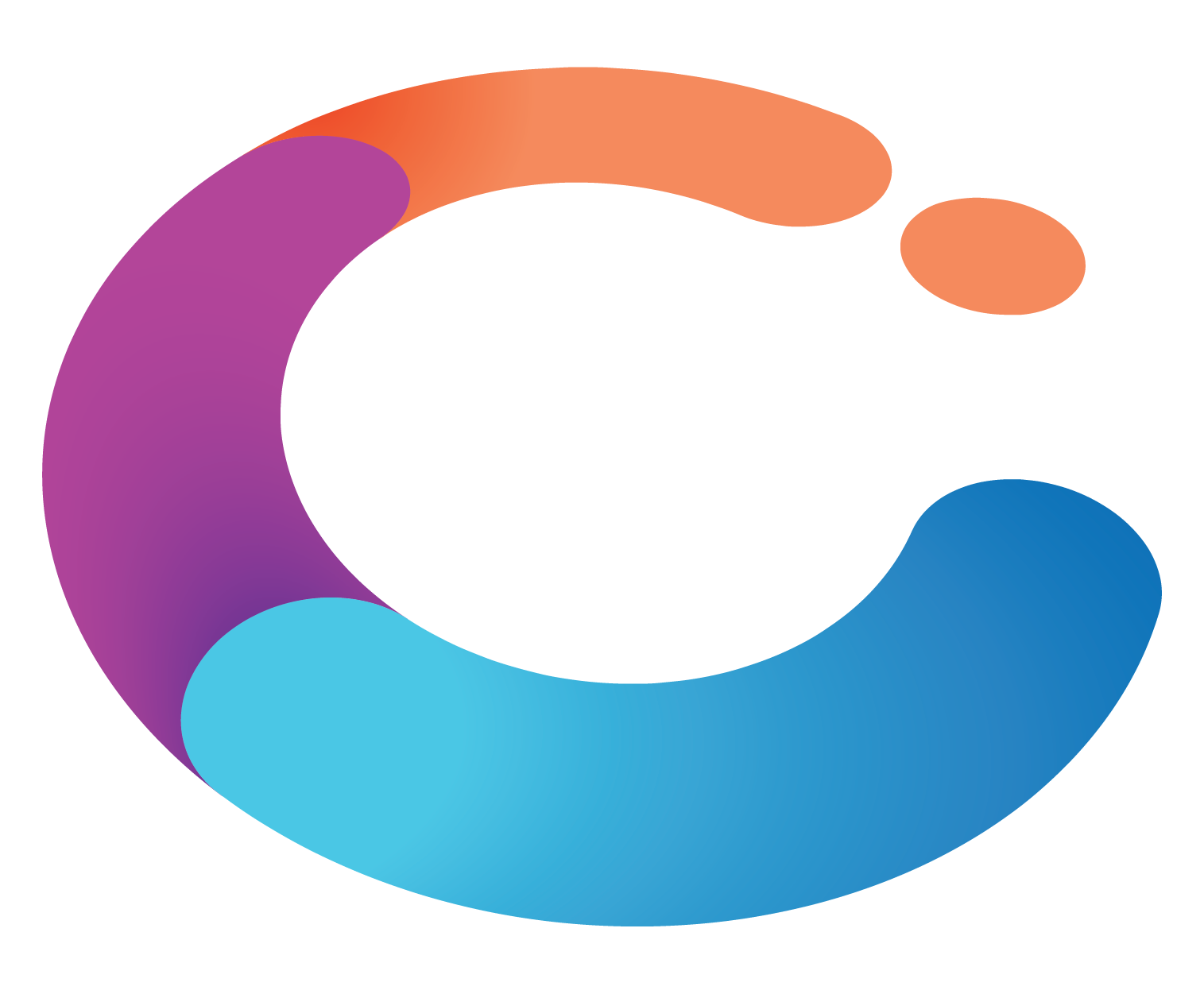Best Practices for LinkedIn Job Advertising: Proven Strategies for HR Success
The article outlines best practices for LinkedIn job advertising, emphasising strategies that enhance HR success by leveraging the platform's...
Engage
|
Hire
|
Develop
|
Assess
|
|
Deeply understand your organisation with science-backed analytics on your culture, team design, and engagement. |
Automatically match to candidates who are a great fit for your team culture and who are intrinsically motivated to succeed. |
Back your onboarding, compliance and skill development with industry-leading credentialling, competency and capability expertise.
|
Reimagine skills assessment and certification with dedicated tools designed to elevate your competency frameworks.
|
.png?width=383&height=200&name=team%20(1).png)
15 min read
 Compono
Mar 28, 2025 8:32:41 PM
Compono
Mar 28, 2025 8:32:41 PM

To create an effective job duties description, it is essential to:
This approach ensures clarity and engagement. Well-crafted job descriptions not only align with organisational goals but also enhance employee satisfaction and performance. Ultimately, this leads to improved hiring outcomes and reduced disengagement among employees.
In the competitive landscape of talent acquisition, well-crafted job descriptions play a crucial role. They serve as the first impression of a company, offering potential candidates insight into the role and its importance within the organisation. However, crafting effective job descriptions involves more than just listing responsibilities; it necessitates a strategic approach that aligns job duties with organisational goals and promotes employee engagement. This article explores the essential components of job duties descriptions, emphasising best practices, common pitfalls to avoid, and innovative tools that can enhance the writing and management process. By grasping the nuances of job duties and utilising technology, organisations can attract the right talent and cultivate a motivated workforce equipped to tackle the challenges of today’s dynamic work environment.
Job duties description encompasses the specific tasks and responsibilities expected of an employee in their position, forming the backbone of job descriptions. Clear articulation of these duties is crucial for both organisational success and employee satisfaction. To effectively outline job duties, follow these essential steps:
Conduct a Job Analysis: Begin by gathering comprehensive information about the position. This can be achieved through interviews with current employees, direct observations, and a review of existing documentation. Leveraging integrated, automated, and compliant HR solutions can streamline this process, ensuring that you capture the nuances of the position while aligning with organisational objectives.
Identify Core Responsibilities: Compile a list of primary tasks that are essential to the position. It’s vital that these responsibilities align with the organisation’s objectives, as this alignment fosters a sense of purpose and direction for the employee. Utilising science-backed insights can enhance the identification of the core responsibilities, ensuring they resonate with both individual strengths and organisational goals.
Use Clear Language: When writing job duties, employ straightforward language to eliminate ambiguity. Clarity is crucial to ensuring that prospective applicants fully comprehend the expectations and requirements of the position. This transparency not only assists in hiring but also boosts employee involvement, as applicants are more likely to feel connected with their positions.
Prioritise Duties: Rank the identified duties by their importance. Emphasising the most important tasks not only clarifies expectations but also helps individuals in understanding what is essential for success in the position.
Establishing a solid understanding of the job duties description is foundational for creating effective job descriptions that resonate with candidates and fulfil organisational needs. Recent trends indicate that a significant percentage of employees—58%—report feeling unmotivated at work, underscoring the necessity for clear job responsibilities that align with individual strengths and organisational goals. This lack of clarity can contribute to poor communication, which costs UK companies an estimated £1.2 trillion annually.
Moreover, organisations that have successfully identified core responsibilities in job functions have seen marked improvements in employee engagement and performance. For instance, companies that implement structured job analysis methods, report enhanced clarity in job expectations, leading to increased productivity and job satisfaction. As noted by Engage For Success, a workplace approach resulting in the right conditions for all members of an organisation to give their best each day is essential for commitment to organisational goals and values.
Expert opinions emphasise that a job duties description is instrumental in defining roles effectively, as it not only guides recruitment but also enhances employee performance. In 2025, the significance of job analysis in crafting job roles cannot be overstated, especially as organisations strive to adapt to a rapidly changing work landscape. By investing in thorough job analysis and utilising HR technology, companies can ensure that their job roles are not only accurate but also compelling, ultimately attracting the right talent and fostering a motivated workforce.
This is particularly relevant in light of the findings from the case study "Why It Matters Now," which illustrates how effective job analysis can lead to better people decisions and align teams for success.
An effective job duties description is essential for attracting the right candidates and should encompass the following key components:
Job Title: Clearly state the position title to accurately reflect the function. A well-defined job title not only helps in attracting appropriate applicants but also establishes the tone for the expectations linked to the position.
Job Purpose: Provide a concise overview of the position's objectives and its contribution to the organisation. This section assists applicants in comprehending how their work aligns with the company’s mission and goals, fostering a sense of purpose.
Core Responsibilities: List the main duties in bullet points, ensuring clarity and conciseness. This enables applicants to swiftly understand the key responsibilities of the position, which is vital for efficient decision-making throughout the application process.
Required Qualifications: Specify the necessary skills, education, and experience needed for the role. Clearly outlining these requirements helps filter individuals who possess the essential competencies, thereby improving the quality of applicants.
Preferred Qualifications: Include any additional qualifications that would be advantageous but are not mandatory. This distinction can attract a broader range of applicants while still emphasising the ideal skill set.
Reporting Structure: Indicate who the employee will report to and any supervisory responsibilities they may have. Grasping the reporting hierarchy is essential for individuals to evaluate their possible compatibility within the team and organisation.
Working Conditions: Describe the work environment, including any physical demands or special conditions. Clarity regarding working conditions aids in establishing realistic expectations and can significantly affect an applicant's choice to apply.
Integrating these elements produces a thorough job duties description that gives applicants a clear insight into the position. By leveraging Compono's predictive insights, organisations can enhance their hiring processes, ensuring that candidates are matched effectively to roles where they are most likely to succeed. Compono's solutions do the heavy lifting in this process, allowing HR teams to focus on strategic initiatives.
Research indicates that organisations with clearly outlined roles are more likely to enhance their hiring processes and overall employee satisfaction. For instance, 77% of mid-sized companies recognise HR as a strategic function, highlighting the importance of effective job descriptions in aligning talent with organisational goals. Furthermore, high-performance organisations are twice as likely to report that their workforces are prepared for future challenges, underscoring the critical role of clear job titles and purposes in driving successful hiring outcomes.
As Joanna Plohl, Group HR Manager, noted, "This enables us to look beyond our industry to find quality candidates who have transferable skills and fit right in." This viewpoint strengthens the notion that a clear job duties description is essential in attracting the right talent. Additionally, incorporating insights from Compono's free Work Personality assessment can further enhance team dynamics by leveraging individual strengths for effective collaboration in HR management.
Additional research is advised to investigate the influence of other recruitment factors, indicating that job specifications are merely one aspect of a more comprehensive recruitment strategy. In the rapidly changing work landscape, effective job outlines are more crucial than ever for organisational success.

Clarity in job postings, particularly in the job duties description, is crucial for attracting suitable applicants. At Compono, we leverage predictive insights to enhance this process. Here’s how specific duties contribute to this:
Reduces Misalignment: A clearly defined job duties description allows candidates to understand what is expected in the position, significantly reducing the likelihood of misalignment between their skills and the job requirements. This alignment is vital, as nearly 75% of employers acknowledge hiring the wrong individual for a position, often due to vague job specifications.
Enhances Applicant Experience: When applicants have a clear understanding of the job duties description, they can better assess their fit for the role. This clarity fosters a more positive application experience, as individuals feel informed and empowered in their decision-making.
Improves Quality of Applications: The job duties description acts as a filter, attracting only those individuals who are genuinely interested and capable of fulfilling the role. This targeted approach streamlines the hiring process and increases the likelihood of finding the right match. Organisations with robust onboarding processes report a productivity boost of over 70%, underscoring the importance of attracting the right individuals from the outset. Compono's solutions ensure that only the most suitable candidates are aligned with your job requirements.
Sets Clear Expectations: Candidates who understand the job duties description are more likely to enter the role with realistic expectations. This understanding promotes higher job satisfaction and retention rates, as employees are less likely to feel misled about their responsibilities. By utilising science-backed insights, HR leaders can craft job postings that provide a clear job duties description and align with organisational goals.
In today's rapidly changing work environment, where organisations can enhance their applicant experience by aligning their employee value proposition with expectations, prioritising clarity in job outlines is more important than ever. By doing so, organisations can significantly improve their recruitment efforts, resulting in stronger teams and enhanced overall performance. This is particularly relevant as many companies continue to make poor hiring decisions due to outdated models, as highlighted in the case study 'Why It Matters Now.'
Moreover, Compono's Hire not only enhance job postings but also play a critical role in learning and development management, ensuring that applicants are not only suitable for the role but also positioned for success within the organisation. By accelerating the hiring of individuals who are most likely to thrive, Compono empowers HR leaders to build effective teams that drive organisational success.
To create effective job duties descriptions, it is essential to avoid several common pitfalls that can hinder the hiring process:
Vague Language: Ambiguous terms can lead to confusion about job expectations. Clear and precise language in the job duties description is crucial to ensure individuals understand their potential responsibilities. As Knapp states, if the experimental design does not allow for separating the effect of time from the effect of the intervention, conclusions regarding the impact should be presented as tentative. This principle applies to the job duties description as well; clarity is key to setting accurate expectations.
Overly Long Descriptions: Lengthy job duties can overwhelm applicants and dilute key information. Keeping the job duties description concise helps maintain focus on the most important aspects of the position.
Excessive Jargon: Using industry-specific jargon may alienate potential applicants. Instead, opt for clear, accessible language that resonates with a broader audience.
Unrealistic Expectations: Listing duties that are unachievable or irrelevant can deter qualified applicants. It is vital to ensure that the job duties description is realistic and aligned with the role.
Neglecting Soft Skills: While technical skills are important, overlooking essential soft skills can lead to hiring mismatches. Highlighting interpersonal skills in the job duties description alongside technical requirements can attract well-rounded candidates.
Statistics reveal that vague job duties descriptions can significantly impact hiring outcomes. For example, studies show that 75% of recruiters use social media to discover prospects, and 53% have successfully hired individuals sourced through these platforms. This highlights the significance of having a clear job duties description prepared to attract applicant interest, particularly as application submissions peak on Mondays and Tuesdays.
Additionally, leveraging predictive insights can optimise applicant matching, ensuring that the right individuals are identified based on their fit for the role and organisational culture. A case study titled "Resume Statistics for Recent Graduates" shows that employers prioritise problem-solving skills and value candidates with relevant work experience. This indicates that recent graduates should concentrate on highlighting their problem-solving skills and pertinent experiences in job postings to improve their employability.
By avoiding these pitfalls and integrating these insights, HR managers can create job roles that include a comprehensive job duties description, effectively conveying expectations and attracting the right talent, ultimately improving the overall hiring process.
Aligning job duties descriptions with organisational goals is crucial for fostering employee engagement and driving overall success. To effectively achieve this alignment, begin by clearly articulating the company’s mission and objectives. This foundational step ensures that job duties descriptions are relevant and aligned with the broader goals of the organisation.
Engaging employees in discussions about how their positions contribute to the organisation’s objectives fosters a sense of ownership and accountability. When employees feel their input is valued, they are more likely to be invested in their work. Compono’s Work Personality assessment tool facilitates this process by helping identify dominant work types and generating detailed reports that allow for tailored discussions, thereby enhancing team performance.
As organisational goals evolve, it is essential to regularly review and update job duties descriptions to ensure that roles remain relevant. Statistics reveal that only 25% of employees feel their company’s internal mobility programme is excellent, highlighting a significant opportunity for improvement. This practice not only keeps employees aligned with the company’s direction but also provides a clear job duties description to help adapt to changing market conditions. Compono’s science-backed insights support this ongoing evaluation, ensuring that job roles evolve in tandem with organisational needs. Additionally, Compono's intelligent hiring solutions assist in aligning new hires with these evolving roles.
Clearly communicating to employees how their job duties descriptions impact the organisation’s success reinforces their importance and helps them understand the value of their contributions. Furthermore, organisations that actively involve employees in defining job duties can see a marked increase in engagement levels. For instance, companies that prioritise employee recognition and appreciation can mitigate the 48% higher likelihood of daily stress experienced by disengaged employees, as indicated by Gallup research. Employee engagement strategies, including programmes like ESOP and Employee Assistance Programs, can further enhance workforce wellness and connection to organisational goals.
By aligning job duties with organisational goals, companies can enhance employee engagement, leading to improved performance, innovation, and retention. This strategic approach benefits employees and drives overall organisational success.

To craft effective job duties descriptions, consider the following best practices, enhanced by innovative HR technology:
Use Action-Oriented Language: Begin each duty with a strong action verb to instill a sense of responsibility and urgency. This approach captures attention and clearly communicates expectations. Research indicates that job postings utilising action-oriented language can significantly increase application rates, making it a crucial element in attracting the right individuals. With predictive insights, you can further enhance these profiles to align with individuals who are most likely to succeed.
Be Specific and Concise: Clearly outline each duty without unnecessary detail, focusing on the essentials of the role. A concise job duties description helps applicants quickly understand the expectations and responsibilities, which is vital in today’s fast-paced job market. Notably, the average resume length remains at 1.7 pages, reflecting a trend where individuals must balance detail with clarity to effectively showcase their experience.
Incorporate Metrics: Whenever possible, include metrics or outcomes associated with each duty. This provides context and establishes clear expectations, enabling individuals to assess their potential influence within the organisation. For instance, stating that a position involves 'increasing sales by 20% within the first year' gives candidates a tangible goal to strive for. Data-driven insights can help identify the most relevant metrics to include.
Solicit Feedback: Regularly seek input from current employees and hiring managers to ensure job duties accurately reflect the role. This collaborative method improves the precision of the details and fosters a sense of ownership among team members, leading to more effective recruitment.
Utilise Templates: Consider using standardised templates to maintain consistency across job postings while allowing for customisation. Templates can simplify the writing process and ensure that all essential components are addressed, making it easier for HR managers to craft a comprehensive and effective job duties description. Compono offers customisable templates and AI assistance that can enhance this aspect of workforce management.
Additionally, it's worth noting that application submissions peak on Mondays and Tuesdays, according to LinkedIn and ZipRecruiter. This timing can be vital when determining when to share job listings to enhance visibility and draw in qualified applicants. By following these best practices and leveraging Compono's sophisticated HR technology, HR managers can create a job duties description that attracts qualified applicants while providing them with clear insight into their potential roles within the organisation.
This clarity is essential in a competitive job market where candidates are increasingly discerning about their career choices.
Ready to see how Compono can do the heavy lifting in your hiring process? Get started with a personalised demo today!
Leveraging technology can significantly enhance the writing and management of job duty descriptions for job postings. Here are some effective tools and strategies to consider:
Job Outline Software: Implement specialised software that provides templates and guidelines for crafting job outlines. This ensures consistency, compliance, and alignment with industry standards, ultimately presenting your organisation in the best light. Notably, small businesses can save up to $10,000 by utilising an applicant tracking system, highlighting the financial benefits of such technology.
AI-Powered Tools: Explore AI-driven platforms that analyse job descriptions for clarity and inclusivity. These tools suggest enhancements based on data-driven insights, assisting in creating more engaging and accessible job postings that attract a diverse range of applicants. Compono's predictive insights can further improve this process by matching candidates who are most likely to thrive in the positions, ensuring a more effective hiring strategy. However, it's important to note that while AI writing is considered competent, many find it lacks a people-first approach and fails to cater to human readers.
Collaboration Tools: Utilise collaborative platforms that enable multiple stakeholders to contribute to job details. This approach ensures that diverse perspectives are included in the job duties description, fostering a more comprehensive understanding of the role and its requirements.
Analytics Tools: Implement analytics to monitor the effectiveness of job postings. By measuring metrics such as application rates and candidate quality, organisations can refine their job postings to better attract top talent.
Regular Updates: Utilise technology to set reminders for routine evaluations and updates of job roles. Keeping job roles relevant and reflective of current needs is crucial for maintaining an effective hiring strategy.
By incorporating these technological solutions into the job duties description process, organisations can enhance their efficiency and effectiveness in attracting top talent, ultimately leading to better hiring outcomes. As Joanna Plohl, Group HR Manager, states, "This enables us to look beyond our industry to find quality candidates who have transferable skills and fit right in." Additionally, insights from Compono's market validation research emphasise the need for mid-sized companies to adopt effective job management processes to present their best job listings.
Compono's comprehensive HR technology solutions ensure that organisations can streamline their workforce management while enhancing employee engagement.
As the workplace continues to evolve, job roles are undergoing significant transformations. Key trends and innovations to watch include:
Skills-Based Listings: A notable shift towards skills-based job listings prioritises competencies over traditional role titles. This approach allows organisations to focus on what candidates can actually do, rather than merely their previous job titles. As Joanna Plohl, Group HR Manager, states, "This enables us to look beyond our industry to find quality candidates who have transferable skills and fit right in."
Dynamic Job Roles: Flexible job roles are emerging, designed to adapt to changing responsibilities and organisational needs. This adaptability ensures that job roles remain relevant in fast-paced environments, allowing companies to respond quickly to market demands. Notably, 72% of employees prioritise flexible work arrangements, underscoring the importance of this trend in attracting top talent. Compono's flexible work solutions, including remote work across Australia, New Zealand, the Philippines, Spain, the UK, and Poland, exemplify this adaptability, fostering enhanced employee engagement.
Emphasis on Diversity and Inclusion: A growing emphasis on using inclusive language and practices in job postings aims to attract a varied applicant pool. This trend broadens the talent search and fosters a more equitable workplace culture. The 2024 Trends Report highlights this shift, emphasising the need for organisations to adopt innovative strategies that promote diversity and inclusion.
Integration with AI: The incorporation of AI technologies optimises job postings for search engines and candidate matching. By enhancing visibility and relevance, AI helps organisations attract the right talent more efficiently.
Remote Work Considerations: With remote work becoming more prevalent, job listings increasingly reflect the requirements and expectations of remote roles. This includes outlining specific skills needed for remote collaboration and communication. Compono's commitment to providing structured career frameworks and opportunities for career progression further supports employees in adapting to these remote work environments.
By staying attuned to these trends, HR managers can ensure their job listings remain relevant and effective in attracting top talent. The shift towards skills-based job descriptions, in particular, is reshaping hiring practices, making it essential for organisations to adapt their strategies accordingly. This philosophy of understanding individual potential and creating suitable work environments is crucial in navigating these changes, especially as recruitment strategies evolve from traditional CVs to more innovative approaches like psychometric assessments.

Crafting effective job descriptions is pivotal in today’s competitive talent acquisition landscape. This article highlights several key components necessary for creating compelling job duty descriptions, such as:
By identifying core responsibilities and utilising technology, organisations can enhance their recruitment processes and attract the right candidates.
Moreover, the importance of clarity cannot be overstated. Clear job descriptions significantly reduce misalignment and improve the candidate experience, leading to higher-quality applications. Avoiding common pitfalls, such as vague language and unrealistic expectations, is crucial for ensuring that job descriptions effectively communicate the requirements of the role.
As organisations adapt to a rapidly changing work environment, aligning job duties with broader organisational objectives fosters employee engagement and drives performance. Implementing best practices and leveraging innovative tools can streamline the writing and management process of job descriptions, ultimately leading to improved hiring outcomes.
In conclusion, the strategic development of job descriptions is essential for attracting and retaining top talent. By prioritising clarity, specificity, and alignment with organisational goals, companies can cultivate a motivated workforce ready to meet the challenges of the future. Embracing technology and evolving trends will further enhance the effectiveness of job descriptions, ensuring that they not only resonate with potential candidates but also contribute to the overall success of the organisation.
What is the purpose of a job duties description?
A job duties description outlines the specific tasks and responsibilities expected of an employee in their position, which is essential for organisational success and employee satisfaction.
How should one begin to outline job duties?
Begin by conducting a job analysis, which includes gathering information through interviews with current employees, direct observations, and reviewing existing documentation.
What are core responsibilities in a job duties description?
Core responsibilities are the primary tasks essential to the position that align with the organisation’s objectives, fostering a sense of purpose and direction for the employee.
Why is clear language important in writing job duties?
Using straightforward language eliminates ambiguity, ensuring that prospective applicants fully understand the expectations and requirements of the position, which enhances hiring and employee involvement.
How should job duties be prioritised?
Job duties should be ranked by their importance, emphasising the most critical tasks to clarify expectations and help individuals understand what is essential for success in the position.
What key components should be included in a job duties description?
Key components include: Job Title, Job Purpose, Core Responsibilities, Required Qualifications, Preferred Qualifications, Reporting Structure, and Working Conditions.
How does a well-crafted job duties description impact recruitment?
A clear job duties description helps attract the right candidates by providing them with a comprehensive understanding of the role, which improves the quality of applicants and overall employee satisfaction.
What benefits do organisations gain from effective job analysis?
Organisations that implement structured job analysis methods see improvements in employee engagement and performance, leading to enhanced clarity in job expectations and increased productivity.
Why is it important to keep job duties descriptions updated?
Keeping job duties descriptions updated is crucial as organisations adapt to a rapidly changing work landscape, ensuring that job roles remain accurate and compelling to attract the right talent.

The article outlines best practices for LinkedIn job advertising, emphasising strategies that enhance HR success by leveraging the platform's...

Best practices for LinkedIn job ads underscore the significance of clear job titles, engaging summaries, and targeted audience strategies to...

Overview The article outlines best practices for interview questionnaires and answers, highlighting the significance of structured approaches to...

Overview The article focuses on best practices for HR managers in formulating effective interview questions to enhance the recruitment process. It...

Overview The article examines how to effectively respond to the top 10 interview questions to improve a candidate's chances of success. It...

Overview Mastering attrition risk requires the implementation of essential strategies that enhance employee engagement, acknowledge contributions,...